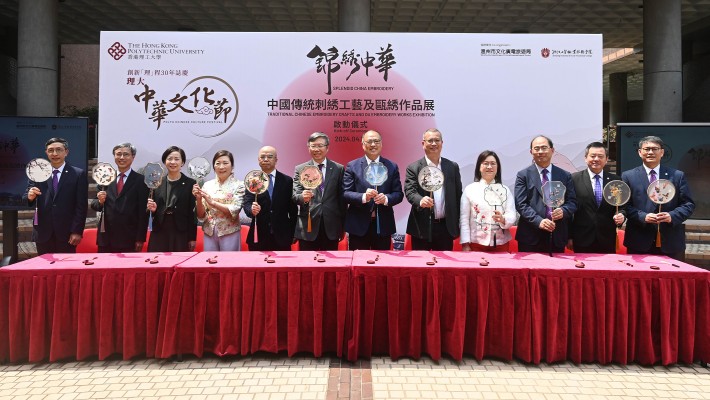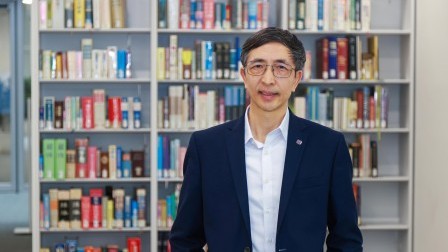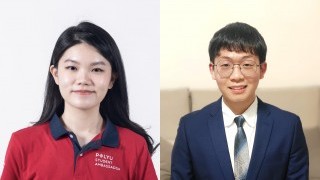Feast your eyes on the fine art of Chinese embroidery
Other Articles
The art of Chinese embroidery carries profound cultural and historical significance and is part of China's intangible heritage. Since ancient times, it has been widely used in the fields of textiles, home furnishing, and artworks, and has become a popular commodity at home and abroad. Among the many styles, the renowned Ou embroidery from Wenzhou in Zhejiang province stands out. Its complex stitching, vibrant and colourful textures, and exceptional fine craftsmanship make it a cultural treasure worth exploring.
As part of its Chinese Culture Festival, PolyU presented the "Splendid China Embroidery - Traditional Chinese Embroidery Crafts and Ou Embroidery Works Exhibition" in collaboration with the Wenzhou Municipal Culture, Radio, Television and Tourism Bureau, and the Zhejiang Industry and Trade Vocational College in April to promote the national intangible cultural heritage.
Ms Zou Shengzhu, a Senior Arts and Crafts Artist of Zhejiang Industry and Trade Vocational College and Zhejiang Arts and Crafts Master, explained that Ou embroidery is based on stitching, and is like drawing. It reflects people's lifestyles, culture, and emotions. It is special as it has a strong theme, adopting vibrant colours and sophisticated composition.
Visitors to the exhibition could expect an immersive experience. In addition to the stunning artworks on display, the two-week exhibition also covered expert lectures, workshops, and guided tours across the PolyU campus and Hotel ICON, enabling visitors to delve deeper into the history and significance of Ou embroidery. These interactive activities allowed visitors to appreciate the crafts and engage directly with the art masters themselves. It was a precious opportunity to learn firsthand the techniques and secrets behind this ancient art form.

Ms Zou Shengzhu, taught international students the basics of Ou embroidery in the workshop, offering a precious opportunity for them to appreciate the crafts and engage directly with the art master.
To enrich the visitor experience, selected exhibition zones creatively merged traditional culture and technology, incorporating vivid light and colour technologies contributed by Professor Tommy Wei Minchen, Professor of the Department of Building Environment and Energy Engineering and Director of the Colour Imaging and Metaverse Research Centre. The innovative approach highlighted the beauty of the embroidery craftsmanship. Additionally, augmented reality technology was integrated into specific zones, taking the viewing experience to a new level.
You can visit website to learn more about the Exhibition and PolyU Chinese Culture Festival.







